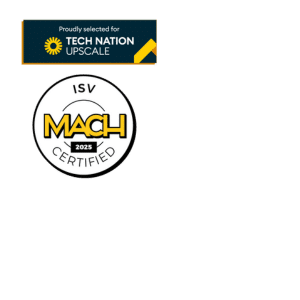What is a Return Merchandise Authorization (RMA)?
RMA refers to the process of customers sending back purchased items to the seller or manufacturer for refund, exchange, or repair. This system, otherwise known as Return Merchandise Authorization, allows businesses to manage product returns efficiently and maintain customer satisfaction.
In-Depth Explanation of Return Merchandise Authorization (RMA)
Returns, also known as Return Merchandise Authorization (RMA), is the process by which customers send back purchased items to the seller or manufacturer. This system allows customers to exchange or receive refunds for products that are defective, damaged, or simply unwanted. RMA is a crucial aspect of eCommerce operations, affecting customer satisfaction and a company’s bottom line.
Why It Matters
Returns management is a critical component of the customer experience in eCommerce. A smooth and efficient returns process can build trust, increase customer loyalty, and encourage repeat purchases. Conversely, a poorly managed returns system can lead to frustration, negative reviews, and lost business. Effective RMA processes also help businesses manage inventory, reduce costs, and gather valuable product feedback.
How It Works
When a customer initiates a return, they typically request an RMA number from the seller. This unique identifier helps track the return throughout the process. The customer then ships the item back to the designated return address, often using a prepaid shipping label provided by the seller. Upon receipt, the returned item is inspected, and the appropriate action is taken, such as issuing a refund, providing a replacement, or offering store credit.
Key Benefits
A well-implemented RMA system offers several advantages for both businesses and customers. For businesses, it helps streamline the returns process, reduce errors, and improve inventory management. It also provides valuable data on return reasons, allowing companies to identify and address product issues. For customers, a hassle-free returns process offers peace of mind, encourages confident purchasing decisions, and enhances overall satisfaction with the shopping experience.
Relevant Stats or Facts
According to the National Retail Federation, the average return rate for online purchases is around 20%, more than double the rate for in-store purchases.
Importance of Return Merchandise Authorizations (RMAs)
Returns, or Return Merchandise Authorization (RMA), play a crucial role in modern business operations, particularly for companies involved in product sales and e-commerce. A well-managed returns process can significantly impact customer satisfaction, brand loyalty, and overall business success. By offering a smooth and efficient returns experience, businesses demonstrate their commitment to customer service and build trust with their clientele. This, in turn, can lead to increased customer retention and positive word-of-mouth marketing, which are invaluable assets in today’s competitive marketplace.
From a financial perspective, an effective returns management system can help businesses minimize losses associated with returned merchandise. By streamlining the process, companies can quickly assess the condition of returned items, determine whether they can be resold, and make informed decisions about restocking or disposal. This level of efficiency can lead to cost savings in inventory management, reduced waste, and improved cash flow. Additionally, analyzing returns data can provide valuable insights into product quality, customer preferences, and potential areas for improvement in the manufacturing or design process.
In the realm of product data management and e-commerce, returns information is a goldmine of data that can be leveraged to enhance various aspects of the business. By tracking and analyzing returns patterns, companies can identify trends in product performance, customer behavior, and market demands. This information can be used to refine product descriptions, improve marketing strategies, and optimize inventory management. Furthermore, integrating returns data into the overall product lifecycle management system can help businesses make data-driven decisions about product development, pricing, and customer support strategies, ultimately leading to improved profitability and long-term success in the marketplace.
Examples of Return Merchandise Authorizations (RMAs)
Fashion/Apparel Retailer
For a fashion/apparel retailer, returns (RMA) play a crucial role, especially with the rise of online shopping. Customers often purchase items in multiple sizes or styles, intending to return the ones that do not fit or meet their expectations. Efficient RMA processes enable the retailer to manage these returns quickly, ensuring inventory is updated and resaleable items are promptly restocked. Streamlined returns also foster customer loyalty, providing a hassle-free experience that encourages future purchases.
HVAC Manufacturer
In the HVAC industry, returns management is critical due to the technical nature of the products and the potential for installation errors or defects. An efficient RMA process allows HVAC manufacturers to promptly address customer concerns, diagnose issues, and process returns or repairs in a timely manner. This not only helps maintain the manufacturer’s reputation for quality and reliability but also ensures contractors and end-users have minimal downtime, which is essential for HVAC installations.
Distributor of Auto Parts
For an auto parts distributor, returns can significantly impact inventory management and customer satisfaction. Customers rely on accurate fitment data, and discrepancies can lead to high return rates. Implementing a robust RMA system ensures that incorrect or defective parts are returned, assessed, and either restocked or replaced efficiently. This process is instrumental in reducing errors, maintaining inventory accuracy, and upholding the distributor’s commitment to quality and reliability, ultimately enhancing customer trust.
Brand Owner of Homewares Products Predominantly Selling on Marketplaces & Retailers like Walmart, Lowes, Home Depot, Wayfair
For a brand owner of homewares products, managing returns across multiple sales channels requires a cohesive RMA process. With products sold on large marketplaces and retailers such as Walmart, Lowes, Home Depot, and Wayfair, consistency in handling returns is essential to maintain brand reputation. A centralized RMA system facilitates tracking and processing returns efficiently, regardless of the sales platform. This capability enhances the brand’s ability to address customer issues promptly, ensuring a positive consumer experience and reducing potential negative feedback across diverse retail outlets.
Synonyms
Common synonyms for ‘Return Merchandise Authorizations’ include:
- Refunds
- Exchanges
- Product returns
- Merchandise returns
- Return policy
- Return process
Return Merchandise Authorizations (RMAs) and PIM
Returns, also known as RMA (Return Merchandise Authorization), is a critical process in the retail and eCommerce industry that involves customers sending back purchased items to the seller or manufacturer. This process can occur for various reasons, such as defective products, incorrect items received, or simply customer dissatisfaction. Managing returns efficiently is crucial for businesses to maintain customer satisfaction, reduce costs, and streamline inventory management.
Product Information Management (PIM) solutions play a significant role in the returns process by providing accurate and comprehensive product data. When customers initiate a return, they often need to provide information about the product they’re sending back. A robust PIM system ensures that all product details, including specifications, dimensions, and materials, are readily available and up to date. This information helps customer service representatives quickly identify the item and process the return more efficiently. For example, if a customer wants to return a pair of shoes, the PIM system can provide instant access to the exact model, size, color, and other relevant details, making it easier to validate the return and issue the appropriate refund or exchange.
Furthermore, PIM solutions can help reduce the likelihood of returns by providing customers with detailed and accurate product information before they make a purchase. By ensuring that product descriptions, images, and specifications are complete and precise, businesses can help customers make more informed decisions, leading to fewer returns due to mismatched expectations. Additionally, PIM systems can assist in analyzing return data to identify trends and patterns, allowing businesses to make data-driven decisions to improve product quality, update product information, or adjust marketing strategies. This proactive approach can ultimately lead to a decrease in return rates and an increase in customer satisfaction and loyalty.
Frequently Asked Questions
How long does the RMA process typically take?
The RMA process duration can vary depending on factors such as shipping times, product inspection, and processing. Generally, you can expect the entire process to take anywhere from 7 to 14 business days from the time you initiate the return to when you receive your refund or replacement. Some companies may offer expedited options for faster processing. Its important to check with the specific retailer or manufacturer for their estimated timelines, as they can differ based on company policies and procedures.
What information do I need to provide when requesting an RMA?
When requesting an RMA, you typically need to provide your order number, the product name or SKU, the reason for the return, and your contact information. Some companies may also ask for additional details such as the date of purchase, serial number, or a description of any defects or issues. Having this information ready when you contact customer service can help streamline the process and ensure a quicker response to your RMA request.
Can I return a product without the original packaging?
Most companies prefer that you return items in their original packaging to protect the product during shipping and maintain its resale value. However, many retailers understand that original packaging isnt always available. In such cases, you should use appropriate packaging that ensures the item wont be damaged during transit. Some companies may have specific requirements or may reduce the refund amount if the original packaging is missing, so its best to check their return policy beforehand.







